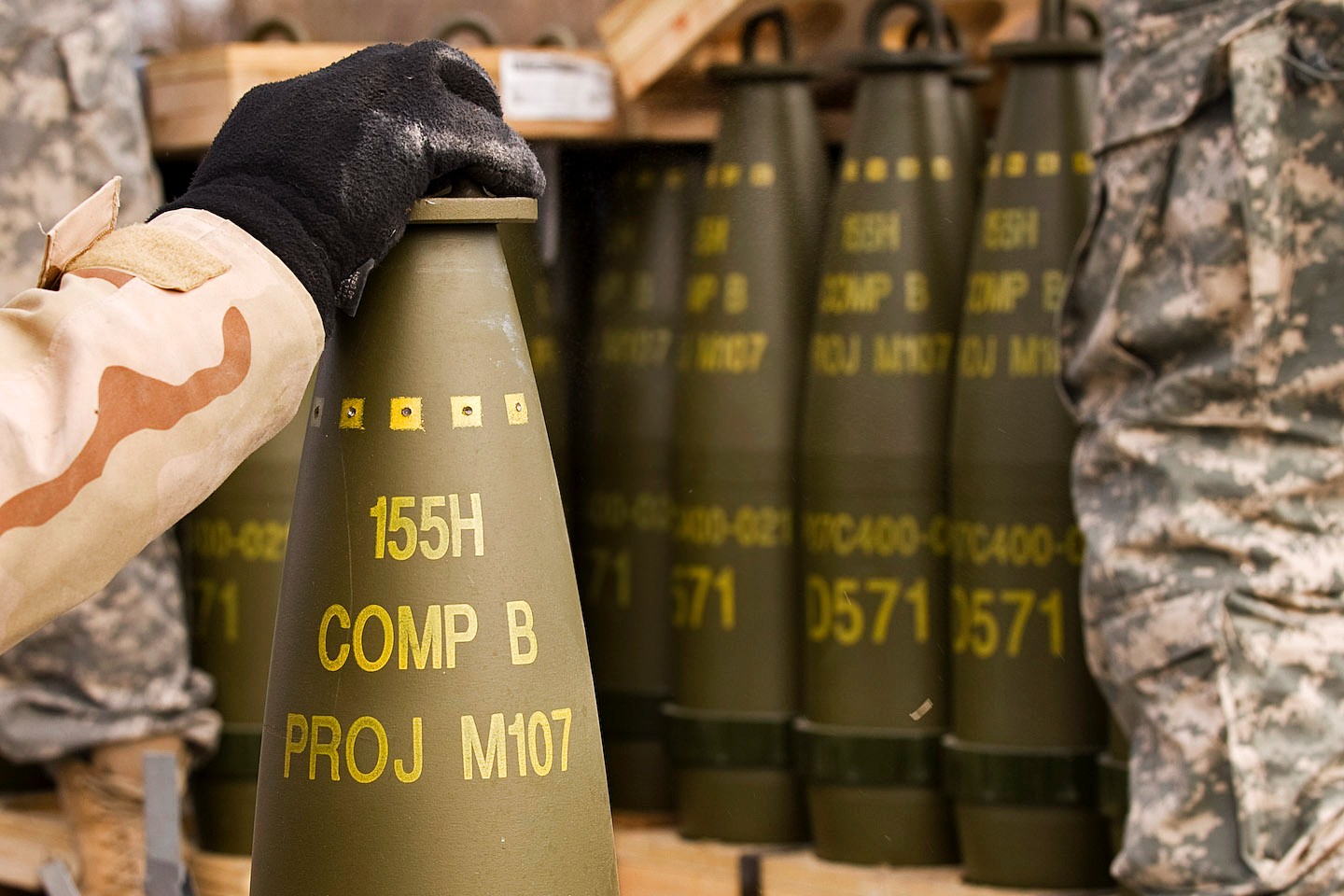Explosive Truth: India’s Ammunition Boom Cuts Dependence On Imports But Focus On Safety ‘Top Priority’

In December 2023, a devastating explosion shook the Economic Explosives Limited (EEL) unit, a subsidiary of Solar Industries known for manufacturing military-grade explosives. Located in Bazargaon, Nagpur, the blast on December 17 claimed the lives of nine workers, sending shockwaves through the community and beyond.
This tragic incident served as a grim reminder of the immense power and inherent risks that lurk within the ammunition industry. It underscored the critical importance of stringent regulations and the unwavering commitment to implementing robust safety protocols – a lapse that can have catastrophic consequences.
Ammunition Storage Challenges
Like a ticking time bomb, ammunition’s effective lifespan is just two decades. While efforts can extend its lifespan to a maximum of 40 years, the challenges of storage and disposal remain daunting.
“Depending on the type of ammunition, generally, the storage temperature ranges from -40 to +50 degrees Celsius. Maintaining the appropriate ambient temperature and controlling humidity are crucial, as these factors play a significant role.
The environment must adhere to the specified temperature and humidity levels indicated for the ammunition to prevent malfunctions or decay of chemicals due to aging. Even instructions for stacking ammunition boxes are typically clearly mentioned,” explained Dilip Gondnale, currently a Senior Advisor and Chairman of DND Enterprises Private Limited, discussing the reasons for accidents.
AfriPrime App link: FREE to download...
https://www.amazon.com/Africircle-AfriPrime/dp/B0D2M3F2JT
Gondnale brings valuable expertise from his extensive tenure in various leadership roles within the Ordnance Factory Board, including CEO positions at Ordnance Factory Ambajhari in Nagpur, Gun & Shell Factory in Cossipore, Kolkata, and Rifle Factory Ishapore in North 24 Parganas, West Bengal.
An ammunition or cartridge box consists of an inner container and an outer package. Typically, two shells packed in laminated paper containers are further packed in wooden or steel boxes with suitable packing fitments to ensure a snug fit.
According to Gondnale, ordnance factories have specialized storage facilities called ‘magazines’ dedicated to housing ammunition. These magazines mandate stringent control over environmental factors like temperature, humidity, pressure man limit, etc.
Crucially, they are situated at a safe remove from the main ammunition production plants. Gondnale cited the example of Pune’s Ammunition Factory Khadaki, whose magazine depot is located in the distant town of Dighi, ensuring ample separation between the storage site and the factory itself.
Additional Ammo Storage & Disposal Challenges
Safety hazards: The presence of stores of conventional ammunition and explosives is a hazard to communities that live and work in or near them. Major explosions can and do occur due to factors such as fire, human error, lightning strikes, instability of propellants or explosives, or sabotage.
Risk of loss and diversion: Many of the problems relating to ammunition stocks are essentially the same as for weapons stockpiles. Vast quantities of ammunition are held by armed forces, police, and other state bodies, as well as by authorized/unauthorized private organizations or individuals. Ammunition stocks are vulnerable to loss through capture, theft, corruption, or neglect.
Problems of safe disposal and destruction of ammunition: Destruction and other safe disposal of excessive, surplus, insecure, or unsafe ammunition stocks. Safe and effective disposal and destruction of ammunition is a much more challenging technical task than it is for most weapons due to the presence of explosives, toxic materials, or propellants.
Thus disposal of Small arms and light weapons (SALW) ammunition is a distinctive task area, closer to that of other conventional ammunition and explosives than to disposal of small arms and light weapons themselves.
Ammunition Boom In India
Historically reliant on imports, India has undergone a remarkable transformation in recent years.
Munitions India Limited and Yantra India Limited, which were formed from the former Ordnance Factory Board, along with Defense Public Sector Undertakings (DPSUs) like Bharat Dynamics Limited (BDL) and Bharat Electronics Limited (BEL), possess the oldest and largest industrial setups for ammunition manufacturing.
AfriPrime App link: FREE to download...
https://www.amazon.com/Africircle-AfriPrime/dp/B0D2M3F2JT
Since the liberalization of the defense sector in 2001 and subsequent amendments in 2006, significant development has occurred in the private industry over the past decade and the country has witnessed a surge in domestic ammunition production.
In addition to the corporatized Ordnance factories, several private sector players have entered the field in recent years, establishing new ammunition plants across the country. Notable companies include Bharat Forge, Adani, L&T MBDA Missile Systems, Blue Horizons Strategic Engineering (BHSEL), and SMPP. The Indian private industry is eager to support the Armed forces’ requirements and the Make in India initiative.
As a result, India has significantly ramped up domestic production of arms and ammunition in recent years and is now aiming to secure a substantial portion of the global arms market.
Reports indicate that India will no longer need to import ammunition from the next financial year, having found domestic suppliers for approximately 150 out of the 175 types it uses. Currently, the Indian army spends between ₹6,000 and 8,000 crore annually ($750M to $1B) on ammunition, all of which will now be sourced domestically.
Maj Gen VK Sharma, ADG (Procurement) of the Indian Army, stated last month, “As far as world demand is concerned, a market worth over $30 billion is available. At present, not even 1% is coming from Indian sources. We have the capacity to reach 5-10% in the next 4-5 years and maybe 25-30% in the future.”
According to a report by Skyquest titled ‘Global Ammunition Market,’ the global ammunition market was valued at USD 55.16 billion in 2022 and is projected to grow from $58.25 billion in 2023 to $90.07 billion by 2031 at a CAGR of 5.60% during the forecast period (2024-2031).
As the Indian defense industry continues to develop its defense products, including ammunition, there will be significant export potential. The government has ambitious defense production and export targets, aiming for an annual defense production target of ₹3 lakh crore and defense exports worth ₹50,000 crores ($6.2B) by 2028-29.
But what about the safety and security aspects of handling and storing ammunition?
Strengthening The Regulatory Framework
The Nagpur blast highlighted the urgent need for robust regulation and oversight. “An inquiry is underway regarding the accident at EEL. Have you heard any updates on the report of the Solar Industries accident? Two committees were formed, one at the state level and one at the center, but no reports have been released yet”, asked a defense expert closely monitoring the incident, who wishes to remain anonymous.
Notably, the Nagpur Solar Industries blast happened in one of the explosives sector’s hubs. Around a dozen explosives makers are located on the Nagpur-Amravati highway.
According to a TOI report published after the accident, the Petroleum and Explosives Safety Organization (PESO) is facing a lack of manpower. The Gondkhairi unit on the Amravati Road (which covers the local units, including SIIL) had only 4 officers who could perform inspections.
PESO is supposed to conduct physical inspections at least once a year for all major establishments. However, inspecting these units is a labor-intensive process that takes at least a month to complete before a report can be prepared. Each individual license counts as one unit, and companies often have multiple licenses for different sections on their premises, covering both the petroleum and explosive industries.
Ordnance factories fall under the Centre for Fire Explosive and Environment Safety (CFEES), a unit of the Defence Research and Development Organisation (DRDO). However, the private sector is regulated by PESO, which is part of the Ministry of Commerce.
Gondnale explained that if the PESO faces staff shortages, private ammunition manufacturers have the option to obtain certification from an alternative agency – CFEES. He stated that CFEES may carry out the audit and provide the necessary certifications to private players should they approach the organization for it.
AfriPrime App link: FREE to download...
https://www.amazon.com/Africircle-AfriPrime/dp/B0D2M3F2JT

A Barcode-Based System
To achieve self-sufficiency in defense, a country needs not only a supply of weapons but also an adequate stockpile of ammunition. Recently, in February 2024, Adani Defence unveiled South Asia’s largest ammunition and missiles complex in Kanpur, Uttar Pradesh, spread over 500 acres. It will produce small, medium, and large caliber ammunition for the armed forces, paramilitary forces, and police.
Clearly, with private player contributions along with OFB, the production in the country is growing. What measures can be taken to ensure safety during ammunition production and storage?
Experts like Gondnale advocate for a comprehensive audit of ammunition production units, storage facilities, procedures, and security protocols.
“First, we require an audit of all types of ammunition and the units involved in their production. The audit should encompass the storage facilities, storage methods, procedures followed, and security protocols. It should identify any shortcomings or weaknesses in the system, which must be addressed by the auditors. The government must take decisive action to rectify these issues. Strict measures are imperative to prevent such occurrences in the future”, said Gondnale.
Additionally, Gondnale pointed out the limitations of India’s current ammunition marking system, which merely indicates the production month, year, and manufacturing unit through an alpha-numerical code. He advocated for adopting a barcode-based system that could provide comprehensive data on each ammunition unit, including its origin, production details, and transfer history. While such barcode technology is not presently utilized in India, Gondnale stated that the necessary infrastructure is available to implement it.
Such systems are already operational in Europe, the US, Germany, and various other regions worldwide. This technology would prove invaluable in tracking the ammunition’s entire journey from its inception.
As India’s ammunition industry continues its upward trajectory, the nation stands at a crossroads. Will it prioritize safety and security, learn from past tragedies, and fortify its defenses against future disasters?
Or will complacency and negligence lead to more heartbreaking incidents? The choice is clear—the path forward lies in unwavering vigilance and a steadfast commitment to protecting the lives of those who power this vital industry.
AfriPrime App link: FREE to download...
- Questions and Answers
- Opinion
- Story/Motivational/Inspiring
- Technology
- Art
- Causes
- Crafts
- Dance
- Drinks
- Film/Movie
- Fitness
- Food
- Juegos
- Gardening
- Health
- Home
- Literature
- Music
- Networking
- Other
- Party
- Religion
- Shopping
- Sports
- Theater
- Wellness
- News
- Culture
- War machines and policy

